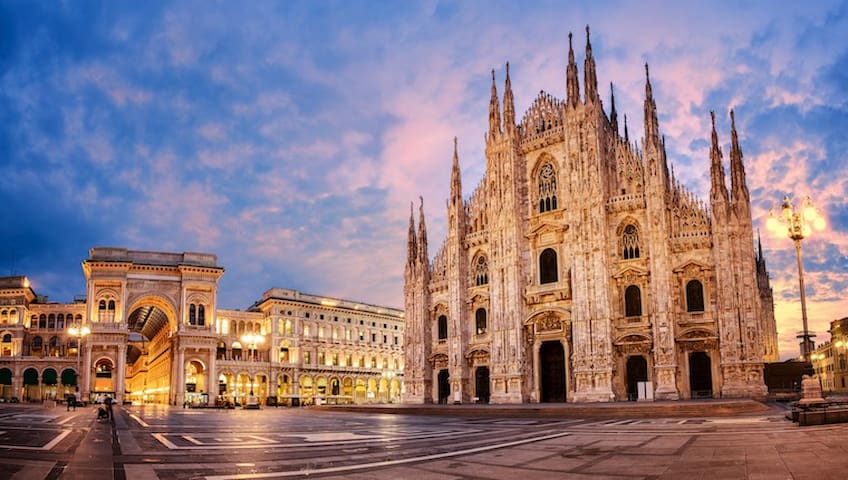Sightseeing
The Duomo of Milan tells a story of faith and art spanning over six centuries. Construction work on the Duomo of Milan probably began in 1386.
Work for the construction of Milan cathedral began in 1386 when the style of Gothic cathedrals had reached its peak. It was decided that the new church should be built in the area of the ancient basilicas of Santa Maria Maggiore and Santa Tecla, the remains of which, together with those of the Baptistery of San Giovanni alle Fonti, are still visible in the Archaeological Area.
For this purpose, in October 1387 the Veneranda Fabbrica del Duomo was founded at the instigation of Gian Galeazzo Visconti, Lord of Milan, with the aim of continuing with the design and construction of the church. Gian Galeazzo’s decision to use Candoglia marble instead of the traditional Lombard brick was accompanied by a real revolution in style through the choice of Gothic, which forced the Fabbrica to look for engineers, architects, sculptors and stone-cutters from all around Europe. The construction site became a lively space for the exchange of the most diverse ideas, experiences and skills from workers coming from all over the continent, which made the Duomo a crossroads of peoples and cultures and the most European among Gothic cathedrals...
2105 personas locales recomiendan
Duomo di Milano
Piazza del DuomoThe Duomo of Milan tells a story of faith and art spanning over six centuries. Construction work on the Duomo of Milan probably began in 1386.
Work for the construction of Milan cathedral began in 1386 when the style of Gothic cathedrals had reached its peak. It was decided that the new church should be built in the area of the ancient basilicas of Santa Maria Maggiore and Santa Tecla, the remains of which, together with those of the Baptistery of San Giovanni alle Fonti, are still visible in the Archaeological Area.
For this purpose, in October 1387 the Veneranda Fabbrica del Duomo was founded at the instigation of Gian Galeazzo Visconti, Lord of Milan, with the aim of continuing with the design and construction of the church. Gian Galeazzo’s decision to use Candoglia marble instead of the traditional Lombard brick was accompanied by a real revolution in style through the choice of Gothic, which forced the Fabbrica to look for engineers, architects, sculptors and stone-cutters from all around Europe. The construction site became a lively space for the exchange of the most diverse ideas, experiences and skills from workers coming from all over the continent, which made the Duomo a crossroads of peoples and cultures and the most European among Gothic cathedrals...

